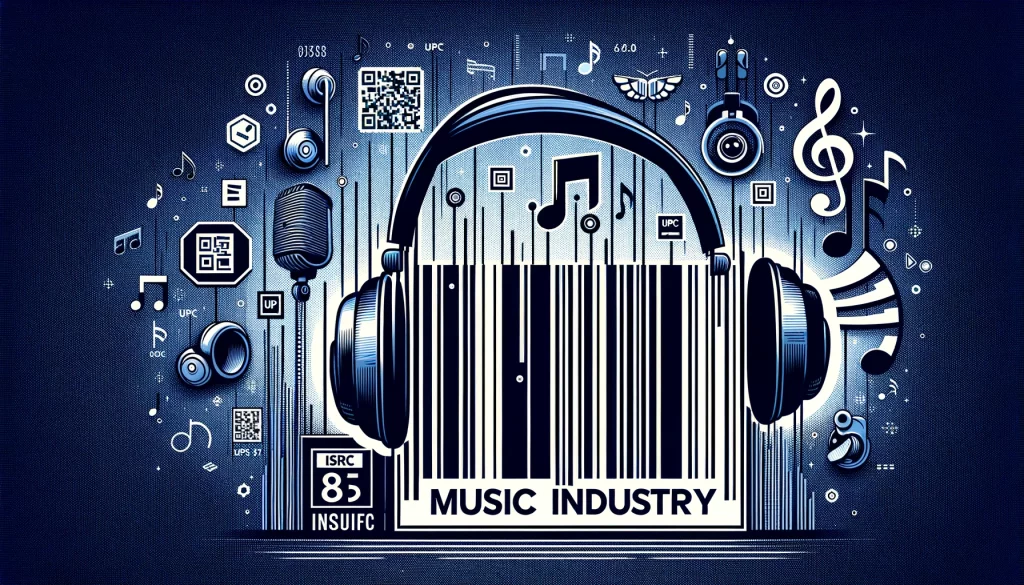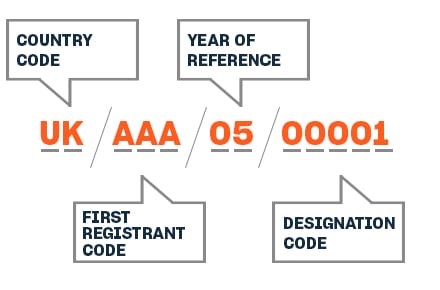UPC vs. ISRC: What’s The Difference?
In the last twenty years, there has been a notable shift in the music industry. The days of buying CDs and vinyl have mostly given way to the use of internet streaming services like Apple Music, Spotify, and Amazon Music. This change had many benefits but also presented difficulties, requiring the development of a more effective song-tracking system. This is where UPC (Universal Product Code) and ISRC (International Standard Recording Code) are useful.
Not only can these codes be used to identify music, they guarantee accurate song play counts and equitable income distribution. These codes provide vital details that help artists and labels assess song performance, audience engagement, and the efficacy of marketing initiatives as the industry grows increasingly data-driven.
What is an ISRC code?
The ISRC, International Standard Recording Code, plays an essential role in the music industry. It ensures that each song is correctly tracked, regardless of where or how it is played.
Fundamentally, ISRC is a song-tracking system, which makes it a vital compenent in the contemporary music industry. It is impossible to exaggerate the significance of ISRC as a single song can be played on numerous platforms in multiple countries and featured on numerous albums, playlists, or adverts. Despite this intricacy, the ISRC code preserves the song’s distinct character.
An ISRC code is a 12-character code that is broken down into four separate parts: the year of registration, the registrant code, the country code, and a special identification for the song. This arrangement guarantees that every song is identified individually, irrespective of where it came from or when it was recorded. An example ISRC code would be displayed as ISRC AA-6Q7-21-00847, for example.
The year the ISRC is assigned is indicated as the “Year of Reference,” which may not match the year of recording. This component makes sure that codes from prior years aren’t inadvertently utilized again.
The registrant selects the “Designation Code,” which consists of five numbers. A variety of Designation Codes are assigned together with a newly assigned Prefix Code (Country and Registrant codes). It is imperative that registrants utilize codes exclusively within their designated range.
The Importance ISRC Plays for Streaming and Playlists
Artists dream of publishing a song and seeing it gain popularity. As it begins to be included in extensive playlists, streamed on radio stations worldwide, and played by thousands of people, they envision dollar signs. It is the ISRC that enables the song to be tracked across all channels and facilitates compensation.
An ISRC code is generated for each song that is streamed on platforms such as Apple Music or Spotify. If music is played millions of times worldwide, this guarantees that artists receive just compensation.
What is the Difference Between ISRC and Copyright?
The main focus of ISRC is tracking. Consider it as each audio or music video recording’s digital fingerprint. An ISRC is a special code that is linked to certain tracks and makes it possible to track purchases, streams, and broadcasts with accuracy. This approach makes sure that record labels, artists, and producers can keep an eye on when and where a tune is played—on TV, radio, or streaming services.
Conversely, copyright is all about control and ownership. It’s a legal privilege that gives the author of an original work the only authority to copy, distribute, perform, and modify their invention. This means that when it comes to music, the artist or the owner of the copyright is the only one who can determine who can use or distribute their work and how.
How ISRC and Copyrights Work Together
Even though their main purposes are distinct, copyright and ISRC frequently work together to safeguard artists and their works of art. Copyright protection benefits greatly from the ISRC system’s accurate tracking capacity. Every time a song is played or used, ISRC keeps an eye on it to make sure that any unauthorized or unlicensed uses are quickly identified. Because of this quick detection, copyright holders and artists can take the appropriate steps to make sure they are properly credited and paid for their work.
Copyright essentially guarantees the legal protection of the artist’s intellectual property, whereas ISRC aids in the precise tracking and reporting of musical performances. When combined, they provide a strong framework that protects music producers’ rights and interests in the digital era.
UPC Barcodes in Music
UPC (Universal Product Code) codes are for entire albums or collections, whereas ISRC numbers are for single songs. It ensures that they are noticeable in the vast world of internet music.
What is a UPC?
Originally, UPC was designed for a wide range of goods. However, when music went digital, albums required a special code. Every song—single, EP, or whole album—needs a unique product code (UPC) to be recognized on the internet. The standardized 12-digit identifier ensures that each album is distinct, even when multiple artists release albums with the same name.
Why UPC Is Important Right Now
UPC is more crucial than ever because fewer people are purchasing physical records and more are purchasing digital music. UPC codes are used to track music on websites such as iTunes, Amazon Music, and even online retailers selling CDs and vinyl. Having a UPC allows artists to access a wider audience, especially those who operate independently. It enables their albums to be featured on major websites and listened by a global audience.
UPC vs. ISRC
In music, UPC and ISRC codes play distinct roles yet are nevertheless significant. ISRC is used for single songs. UPC applies to entire albums.
This distinction is crucial. An album containing ten tracks, for instance, will have ten distinct ISRC numbers but only one UPC code. This ensures that the entire album is properly tracked, as well as every song on it.
How To Get ISRC and UPC Codes
Process to Get ISRC Codes for Your Tracks
Artists and music labels need to ascertain their identifying requirements. Each unique recording needs its own ISRC. It’s important to realize that several interpretations of the same song—live performances, acoustic versions, remixes, or any other variation—need their own ISRC. Accurate tracking and reporting of each version is ensured by this granularity.
The Recording Industry Association of America has been appointed by the International ISRC Agency to oversee the ISRC system within the United States and its territories. ISRC codes can be directly obtained at https://usisrc.org/ or through 3rd party ISRC Manager organizations.
How to Get UPC Codes
UPC codes follow the GS1global identification standards and companies are encouraged to license UPCs (GTINs) in their company name. Please visit www.barcode-us.com to properly obtain UPC and corresponding barcodes.
Typical Mistakes Made Assigning ISRC and UPC Codes
- Using the same ISRC for several songs: Each song needs its own ISRC. It need its own code regardless of whether it’s a live version or remix. It can be confusing and lead to payment problems to use the same code for multiple tracks.
- Failure to update ISRC for updates: Using the previous ISRC when re-releasing a music might be rather alluring. However, it should receive a new ISRC if there are any modifications, such as a remaster.
- Mixing up ISRC and UPC: Keep in mind that UPC is for albums or collections, whereas ISRC is for single songs. Never use the ISRC of a song for an album’s UPC, or vice versa.
- Ignoring the UPC for digital singles: A UPC is still required even if you’re only publishing one song. This guarantees its recognition.
- Not maintaining accurate records. When companies first start out, it is very common for a few individuals to be handling numerous tasks. Record duplication can cause severe problem so companies need mechanisms/processes to keep UPC and ISRC codes managed.
In conclusion, ISRC and UPC codes are now more important than ever because to the development of digital music streaming. These codes act as the albums’ and songs’ digital fingerprints, guaranteeing precise tracking and equitable income sharing. While UPC codes uniquely identify entire albums or collections, ISRC codes do the same for individual tracks. In a data-driven music industry, both are essential for labels and musicians, assisting them in navigating issues such as copyright and international distribution. These codes are essential tools in today’s digital music environment since they can significantly impact an artist’s career when understood and used appropriately.







Comments are closed.